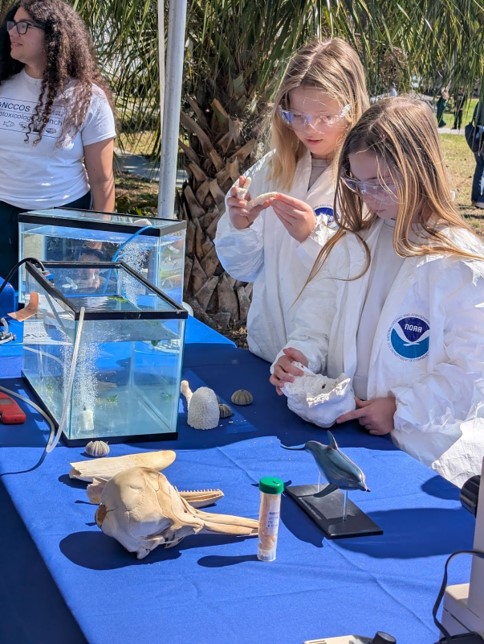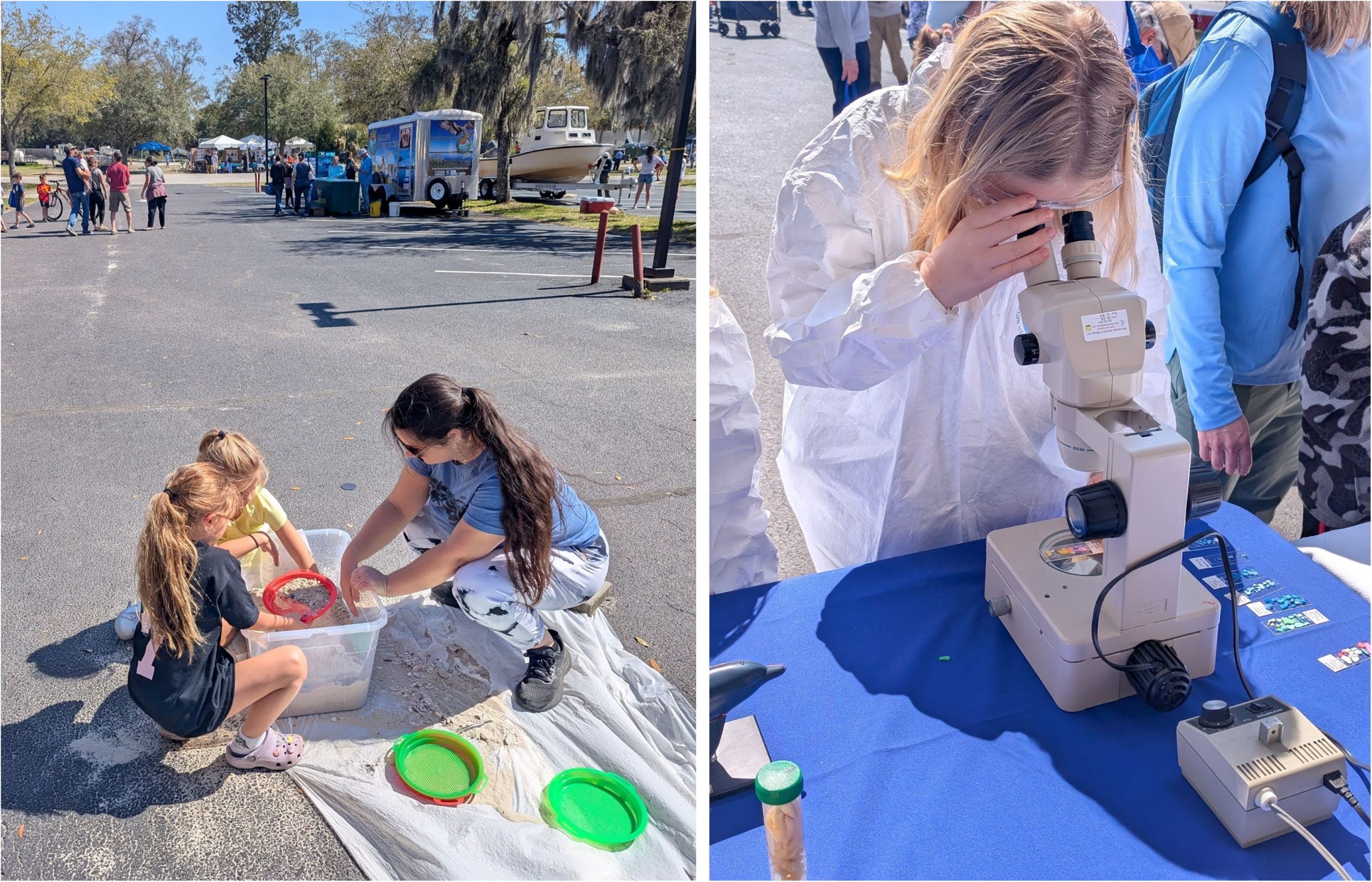Scientists with NOAA’s National Centers for Coastal Ocean Science (NCCOS) Hollings Marine Laboratory joined forces with state and academic partners in the 2025 South Carolina Department of Natural Resources Open House to shed light on NOAA and partnering science conducted within the local community. Over 2,000 participants attended the event to learn more about local coastal issues and the importance of marine conservation. While attending the event, participants of all ages had the opportunity to experience first hand the research conducted by their local state and federal agencies, and establishments of higher education within the Fort Johnson campus of the South Carolina Marine Resources Center in Charleston, South Carolina.

Participants visiting the NCCOS booth experienced actual science and research that NCCOS scientists are conducting within the Hollings Marine Laboratory and were able to:
- Learn how scientists use a Small Intertidal Microcosm Plant Exposure (SIMPLE) system — a series of buckets designed to mimic a natural tidal system — populated with estuarine organisms (i.e., sheepshead minnows, mud snails, and grass shrimp) to understand how contaminants within tidal waters affect ecosystems.
- Engage in a hunt for microplastics to understand how everyday plastics break down in the environment, eventually end up as a source of microplastic in the waterway, and why they can be found in organisms like dolphins, which are an indicator of environmental health and human impact.
- Understand how contaminants affect key species, including urchins and coral, and how stressors — such as turbidity, pollutants, and disease — cause harm or impact their growth.
Staff from South Carolina Department of Natural Resources, the College of Charleston, and the National Institute of Standards and Technology also provided opportunities for attendees to engage in activities.
- South Carolina Department of Natural Resources Genetics team led participants through a genetic markers activity to understand seabird diets.
- College of Charleston’s Grice Marine Laboratory provided a touch tank with turtles, urchins, and blue crabs, giving participants an opportunity to get an up-close look at some organisms found in our coastal environment.
- Hollings Marine Laboratory scientists hosted the first ever joint partnership booth to raise awareness about the state-of-the-art, multi-agency research facility.

This open house provided an opportunity for government–community transparency, allowing the public to gain a better understanding of how scientists research and determine environmental health.
In addition, participants can now better understand the strong symbiotic federal, state, and academic partnership that relies and builds upon each other’s knowledge and expertise to conduct this important research that helps protect coastal communities, and grow stronger economies.
